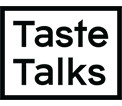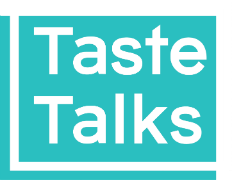Real Talk is our weekly series about the peaks, pitfalls, and perils of the food world. Every week, we’re taking you to the heart of food’s most glamorous (and difficult) projects with the help of our content partner MOO , whose products are all about making dream hustles into beautiful realities ( click here for 20% off your next order!)
From pop-up dinners to pop-tart marketing, hyper-local restaurants to global food empires, this is your peek behind the curtains of food & drink’s dreamiest initiatives and get—you guessed it—the real talk. This week, senior researcher at Trendstop Chrissy Hilton-Gee tells us how she and her team track the latest innovations and evolutions in the food world.
_________________________
I have always found the concept of trend forecasting—to decode our unique behaviors and traits, people’s likes and dislikes, and to translate them into creative narratives—fascinating. My background is in photography and styling, so I had a particular interest in visual communication for a long time.
Most trend forecasters have a creative background in a specific industry area, such as retail or design, which can then be applied to the trend development process. With the rise in demand for trend forecasting, there are now specialist university courses that focus solely on forecasting across a variety of creative-based industries, which to me highlights the relevance and demand for cultural decoding today.
As a trend forecaster, it is vital to be constantly absorbing new information and experiences. We gain a broad overview of the consumer landscape from a huge variety of sources, including constant media and cultural analysis, visiting new spaces, exhibitions and installations, attending trade events, networking and analyzing the most influential people around the globe. Trend prediction revolves around the hunting, gathering and analyzing of information. We look at what has happened in the past, what is happening today, and research innovations and where consumer interests lie. We then crunch all this data to formulate a forecast determining where the market is moving and which trends are likely to develop. We have hundreds of eyes around the globe in the form of our trend spotters: they are the ones constantly tracking anything new or exciting and range from photographers, analysts and researchers.
Trends span a lifecycle that begins with the innovator and early adopter and ends with the mass-mainstream market. The most exciting group of people for a forecaster to watch are the innovators. These are the people that are generating completely new ideas and concepts and it is them that kickstart new innovations. An idea will then start to catch on and be adopted by other social groups. This is when a pattern starts to emerge and a new trend will develop and trickle down into mainstream culture. The way it does this can tell us so much in terms of what is likely to become mainstay and what will quickly fizzle out.
Trend by definition is the general direction in which something is moving or changing; within popular culture, a trend is often referred to as the latest craze and is heavily influenced by a particular consumer desire at a given time. As a trend forecaster, what we are tracking is changes in these consumer behaviors, and it is these changes that influence and indicate a new trend.
A clean and sustainable approach towards food is still at the forefront of the consumer’s mindset. We have seen the raw food movement gain huge momentum and enjoy a much more mainstream presence in recent times. We are also seeing the emergence of much purer ingredients and attitudes towards eating among early-adopters. This will continue to expand and develop to impact the consumer market in the long-term.
We live in a culture today that wants instant everything. With the rise of the internet and social media, information overload and our incredibly fast-paced culture means that things can change much quicker than ever before. As consumers, modern-day technology has put an instantaneous world at our fingertips. This means forecasters have much more information to decipher in terms of its relevancy to the consumer, what is a short-term craze and what is a long-term shift in lifestyle.
Our clients span a range of industry professionals including companies and individuals within the lifestyle and creative industries, from food, fashion and consumer behaviors.
Trends that encompass a sustainable entity across both nourishment and durability are the most enticing from a trend forecasting standpoint. The initial movements towards things like fair trade, local sourcing, and seasonal eating illustrate a multi-faceted approach towards food that is now constantly developing and evolving. This is really inspiring to see, because I believe trends are at the core of who we are. They reflect a moment in time and they shape the way we live and our identity.












